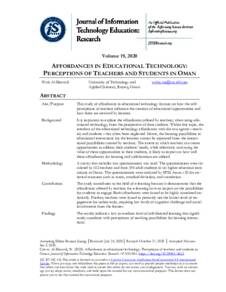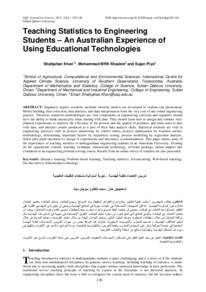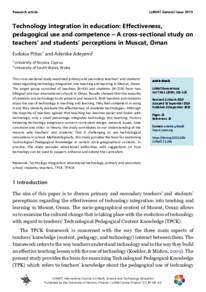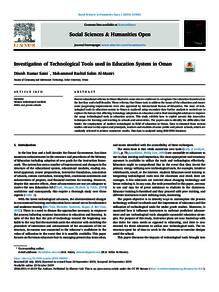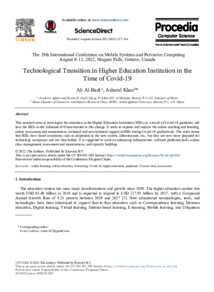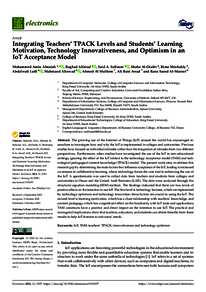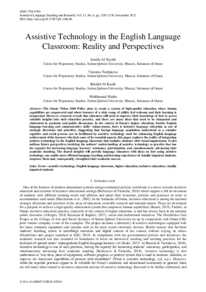Document
Affordances In educational technology : perceptions of teachers and students in Oman.
Identifier
DOI: 10.28945/4662
Source
Journal of Information Technology Education: Research. v. 19, p. 931-952
Country
United States.
City
California
Publisher
Informing Science Institute.
Gregorian
2019-01-01
Language
English
Subject
English abstract
Aim/Purpose This study of affordances in educational technology focuses on how the selfperceptions of teachers influence the creation of educational opportunities and how these are received by learners. Background It is important to explore the affordances offered by teachers, when using educational technology, from the perspective of their students. Within this topic, the interface of the educational technology affordances with the two agents—teachers and students—has often been neglected. Hence, the learning possibilities in educational interactions for the learners cannot be separated from the interactional possibilities created by teachers. The extent to which teachers can create opportunities to address their students’ needs, while effectively conveying the value of these opportunities to their students, is likely to impact on how well these affordances for learning and collaboration are utilised. Methodology A survey that includes two questionnaires was used. The questionnaires were circulated to 102 teachers and their 354 adult students in six higher education institutions in Oman. The questionnaires were analysed by SPSS Amos v20 for statistical measures such as mean, standard deviation, and correlation. Contribution The study contributes to the field of e-learning because it demonstrates that the affordances offered by teachers for e-learning have an impact on the possibilities for students to engage. Both affordances were found to be highly correlated statistically. Further, teachers were found to primarily use the lowest level of engagement for online tasks, requiring low levels of cognitive challenge and social involvement from the learner. Findings The results indicate a low to medium level of self-directed learning that significantly correlates with perceptions of teaching possibilities for learning interactions. Recommendations for Practitioners Teachers are encouraged to vary approaches to student engagement in online teaching materials such as enhancement, additional engagement opportunities, and extension so that students are encouraged to use different cognitive abilities and capabilities to engage in social interactions. Impact on Society This study presents a strong recommendation with regards to extending the online affordances towards social interactions of learning beyond the boundary of the classroom. Future Research Further studies on e-heutagogy and affordances of both teachers and students are needed. The effect of teachers created opportunities on students learning actions is an area that grants further investigation.
ISSN
1547-9714
Resource URL
Category
Journal articles

